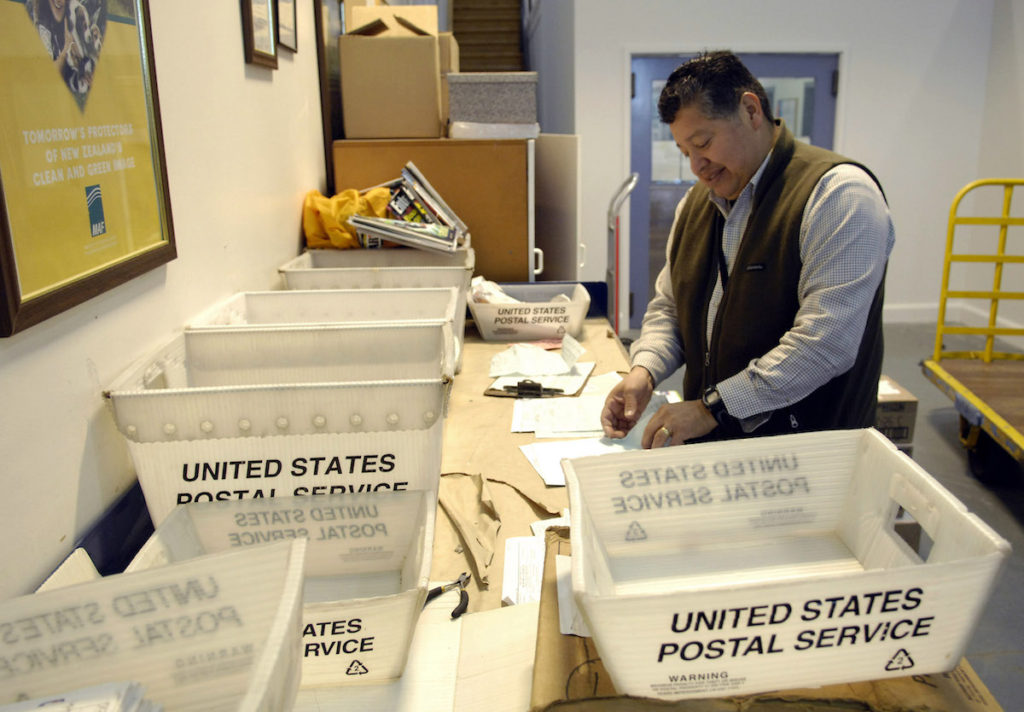Fulfillment occurs at the end of the campaign but you need to get your cost estimates during the campaign planning phase so that you can price your shipping appropriately for your reward levels.
Estimate Shipping Costs
The first step to estimating your shipping costs is to weigh your rewards. The most popular shipping methods such as UPS Ground and USPS First Class base their costs on package weight. Figure out the shipping weight for each reward tier. Remember to also include the weight of the box and packaging materials.
Peter Imai from Whiplash warns that “the most common mistake first time creators make is not taking into account the weight and dimensions of the packaging necessary to house and ship the product.” Some creators recommend putting together a finished package and weighing it on a scale or even taking it to the post office.
Once you have your package weights, you can start researching shipping carriers and picking your shipping methods or start talking to 3PLs, third-party logistics providers that will warehouse your inventory and ship your individual orders.

If you’re shipping within the domestic United States, you’ll likely be using USPS, UPS, FedEx, and possibly a regional carrier. Most carriers will charge you based on package weight and the distance the package has to travel. If you’re using UPS or FedEx, you’ll also get hit with additional fees like fuel surcharges and residential delivery. The most affordable options will be the ground shipping methods.
USPS also has some interesting options like flat-rate boxes and First Class Mail that only charge for package weight regardless of shipping distance. Iman advises creators to pay attention to the services you might have to give up if you pick a lower cost shipping methods because “some of the low-cost methods will not include package tracking or insurance, both of which can save a good amount of future headache.”
If you have rewards that take up a lot of space, you might need to account for “dimensional weight.” Shipping carriers like UPS will charge more if your boxes exceed a certain volume and they have formulas that will give your package a dimensional weight based on its length, width, and height. If the calculated dimensional weight exceeds the actual weight, UPS will charge you based on the dimensional weight.
Whatever you do, don’t pay retail shipping rates. The retail rates listed by the carriers are the starting negotiating point.
You can obtain UPS and FedEx discounts by opening shipping accounts directly with the carriers or using a 3PL that has its own negotiated rates and you can get lower USPS rates by purchasing shipping online through tools like Endicia or Stamps.com.
Boxes, mailers, envelopes, and packing materials will also eat into your shipping budget. Don’t forget to include those in your shipping costs. It’s helpful to review shipping rates for various shipping methods before you decide on packaging because you can optimize package size to save on shipping. Charlie Brieger, co-founder of Fulfillrite, adds that “a box can add significant amount of weight and in a few cases tip it over to the next lb.” There are also certain shipping methods that offer a lower price for flat mailers. Knowing the price difference between shipping a bubble mailer versus shipping a box will help you make the right packaging decisions.
Shipping carriers increase their rates 3-5% each year. If your campaign ends in September and you’re shipping in January, make sure to budget for the increase in shipping costs. Build in margin to help handle unexpected expenses.
Also remember to budget time for picking items and packing boxes. If the workload is more than you can handle by yourself, you’ll need to account for hiring labor or paying a 3PL to help pack and ship your orders. Warehouse fees for storage, picking, and packing can add up to 50% on top of the actual shipping fees.
Plan for All Outcomes
Shipping rewards yourself is a viable option if you have sufficient space at home to store your inventory. There are a number of software services such as Shipstation and BackerKit Postage that creators can use to purchase shipping, print shipping labels, and keep orders organized.
Michael Dickson from Pangea Designs had a $3,000 funding goal for his project, the PiCo Titanium Micro Bottle Opener. The project ended up raising $139,768 on Kickstarter and an additional $31,160 in BackerKit add-ons and pre-order sales. He only needed 125 backers to hit his $3,000 funding goal but ended up with almost 7,000 backers total. Dickson was fortunate that the physical size of his product was incredibly tiny and he and his wife managed to ship out all of the orders from home.
Most project creators that raise fifty times their campaign goal will need to work with a third-party logistics provider to help with inventory storage and shipping. It’s worth it to sketch out your fulfillment plan in case your campaign dramatically overfunds. If you were planning on storing inventory at home and doing all of the packing and shipping yourself, you now have to pay a company to store and ship your rewards. If you didn’t add margin to pay for those fulfillment costs, you could end up in trouble.
Talk to a 3PL to get an idea of how much they will charge to do your fulfillment in case you overfund. Imai says that 3PLs will give you the best estimates after you have your backer data but they can still offer rough estimates if you provide detailed information about your reward items: “You should have an idea of your product roster, how many items in each reward, is there any assembly required post-production and pre-delivery, etc. The more you know about your rewards roster, the better idea you’ll have in terms of actual cost of fulfillment.”
Knowing the costs ahead of time will allow you to price your reward tiers and shipping fees to make sure that you won’t be buried by success.